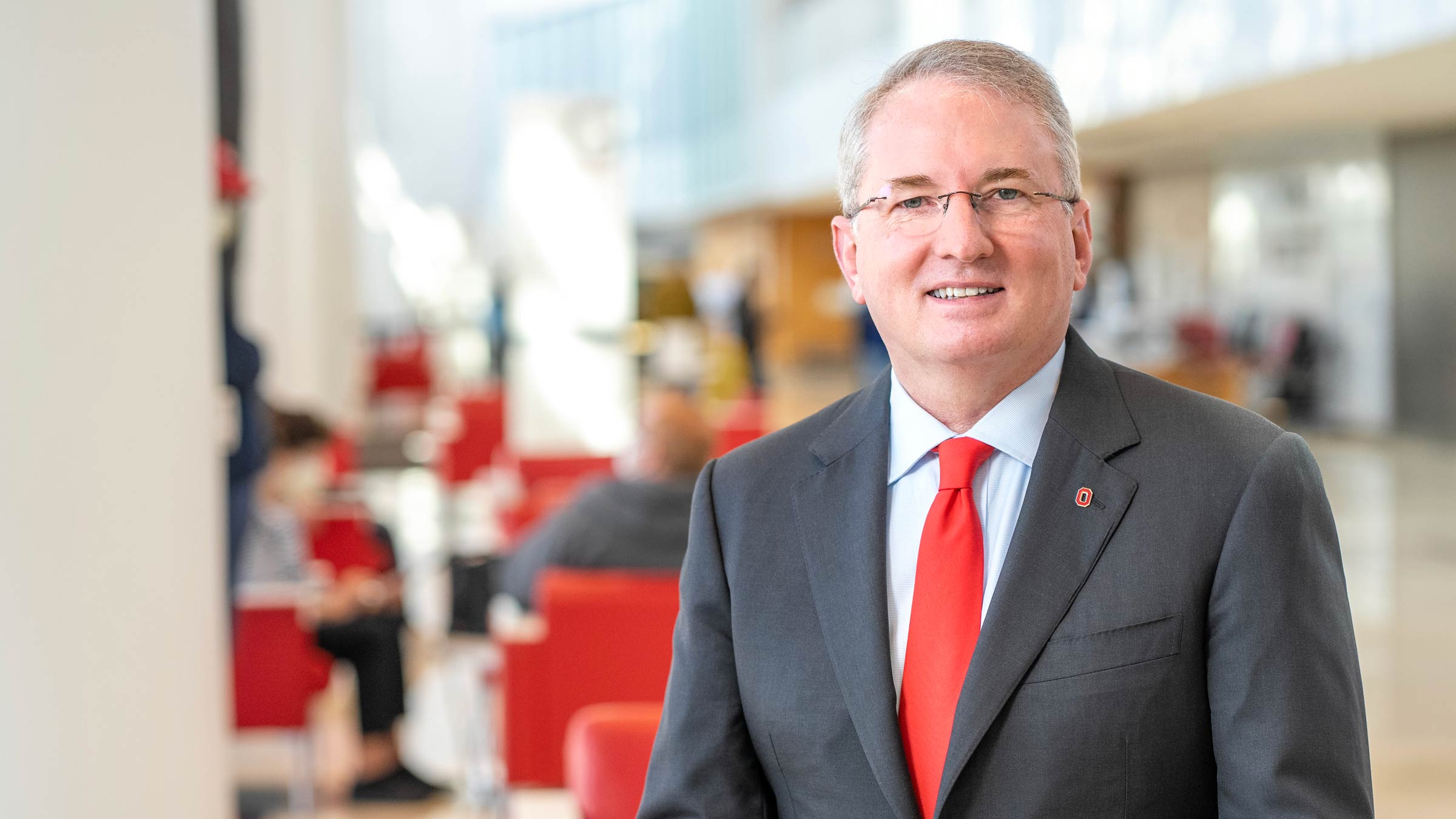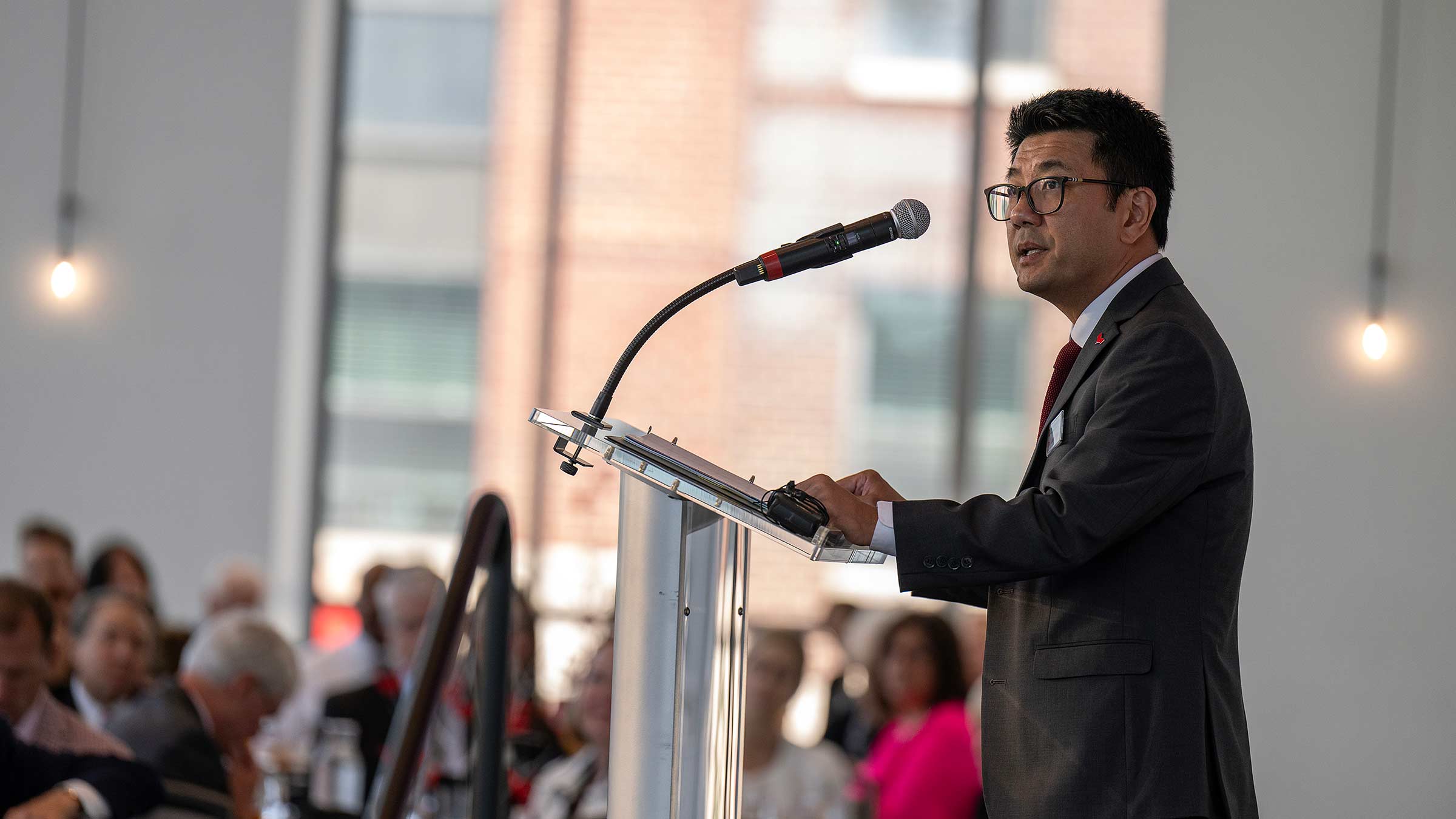The Ohio State University Wexner Medical Center’s new CEO on ‘the chance to do something bigger’
John J. Warner, MD, sees huge opportunity in health care transformation happening at Ohio State.
Growing up in a small town under the wide West Texas sky, John J. Warner, MD, enjoyed the freedom to try everything and see what made the most sense to him.
That spirit would lead Dr. Warner to develop the skills to heal his patients’ hearts and the compassion to guide them through recovery as an interventional cardiologist. It also led him from his initial path as a physician to a passion for health care leadership.
After nearly two decades in Dallas, and at the helm of one of the nation’s largest academic health centers, Dr. Warner has taken on a new challenge as chief executive officer of The Ohio State University Wexner Medical Center and executive vice president at Ohio State.
He says he’s energized by the region’s “culture of innovation” and is ready to help accelerate the health care transformation already happening at Ohio State.
“In every stage of my life, the reason I’ve done something different has been the ability to have a greater impact,” he says. “I see the chance to make a real difference here working alongside so many incredibly talented and passionate people.”
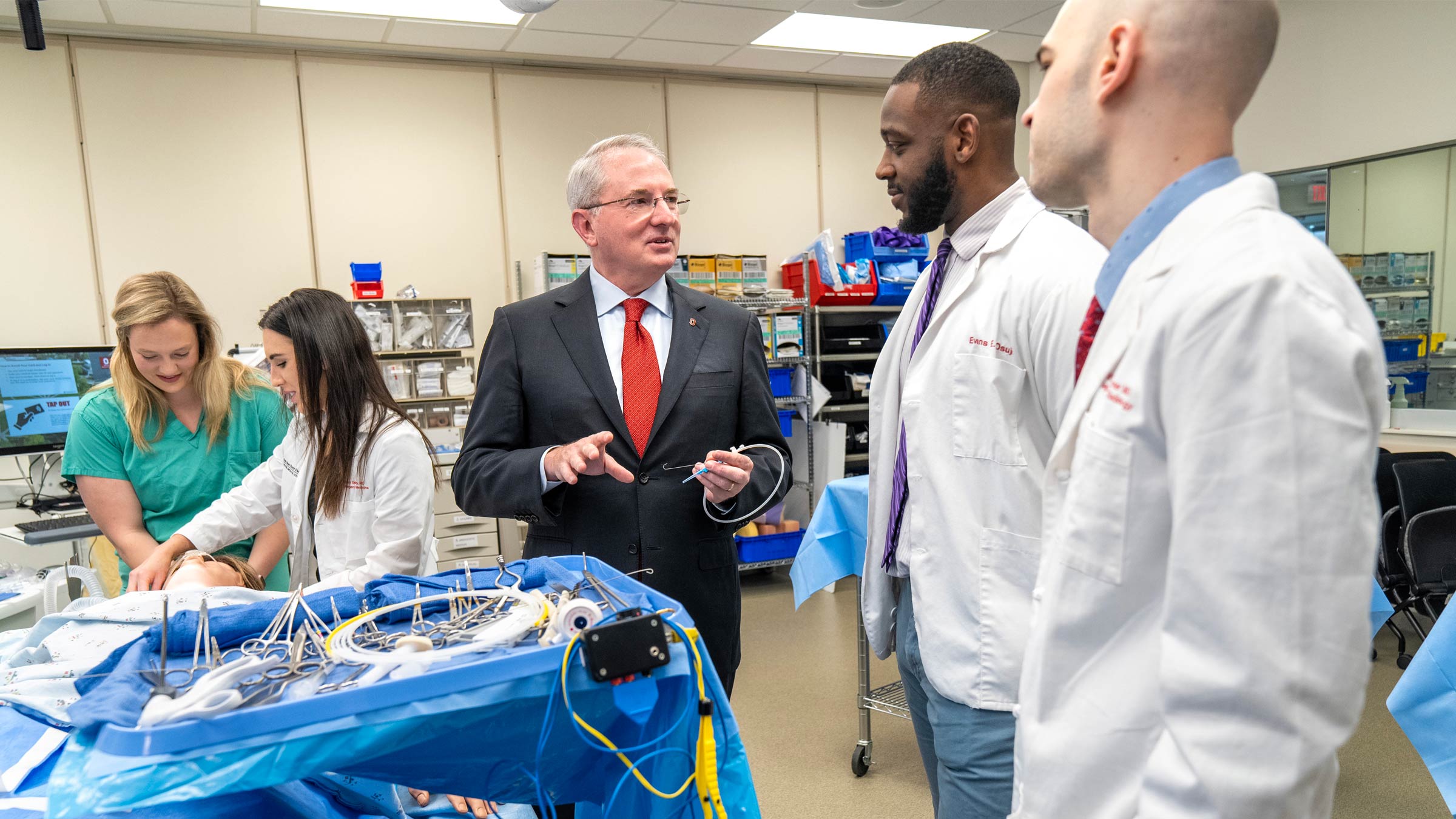
Discovering a passion for leading others
Becoming a hospital leader wasn’t part of Dr. Warner’s original career plan, but he’d always been curious to know more about hospital operations. So, in 2009, at age 44, he interviewed for a one-year position as the physician lead on a new hospital building project at the University of Texas Southwestern Medical Center in Dallas.
The position gave him the chance to explore his curiosity while continuing to see patients at the health system where he’d been working for five years. He fully expected to return to performing heart procedures a year later.
Instead, he found the new challenge exhilarating.
“It was a transformative year,” Dr. Warner says.
To better understand business, Dr. Warner went back to school to earn an MBA. He became CEO of UT Southwestern Hospitals and Clinics in 2012.
A key part of his job was the design, planning and opening of the 460-bed William P. Clements Jr. University Hospital. Just six years later, he would expand his role even further. As CEO of the University of Texas Southwestern Health System and executive vice president for health system affairs, he had clinical oversight of more than 100,000 inpatients and approximately 4 million outpatient visits annually.
In all, he spent 20 years at UT Southwestern. So why leave a place where he had such history and success? He says he couldn’t pass up the opportunity at Ohio State to make a broader impact in a community that has the right ingredients to make a home.
With their two grown children, Lauren and Jacob, he and his wife, Lisa, have been quickly welcomed into the Buckeye family.
“We knew it would take a special opportunity to entice us away from Dallas, and it was obvious from the first conversations that Ohio State was that place,” he says. “We really felt the pride and passion for academic medicine from everyone we met, and the talent at Ohio State is off the charts. The more I talk to people, the more impressed I am with their commitment, their loyalty to the mission and how creative they are. I’m excited to be a part of that.”
Team-based success is the foundation for overall success
Whether hiking the arid hills near his hometown of Ransom Canyon in West Texas, dabbling in music or excelling on the track team, Dr. Warner’s youth was filled with opportunities that shaped the leader he is today. His values are rooted in those formative years. He often mentions lessons learned about teamwork from his experience on Abilene Christian University’s Division II track team, which won the national championship each of his four years.
From the time he was a medical student at the Vanderbilt University School of Medicine, Dr. Warner valued academic medicine’s “diversity of purpose,” as he puts it. During summers assisting renowned cardiovascular researcher Rose Marie Robertson, MD, he developed a respect for the synergy of patient care, research and education — the tripartite mission of academic medicine.
He was captivated by the procedural work of cardiology — measuring blood pressure and blood flow — and went on to pursue a fellowship at Duke University in interventional cardiology, a specialty in which physicians perform catheter-based procedures such as stenting and angioplasty. In his practice, he enjoys both the precision of the procedures he performs as well as the relationships he develops with his patients.
“This was a nice mix of what I wanted to get out of medicine,” he says, “being involved in acute care but also the longitudinal care of patients and families.”
Today, it’s evident he’s comfortable being himself as a leader. He’ll tell a joke, and his relaxed nature invites people to participate in discussions. Former colleagues and mentors describe him as kind, genuine and approachable.
“I’m a relationship-based leader,” he says.
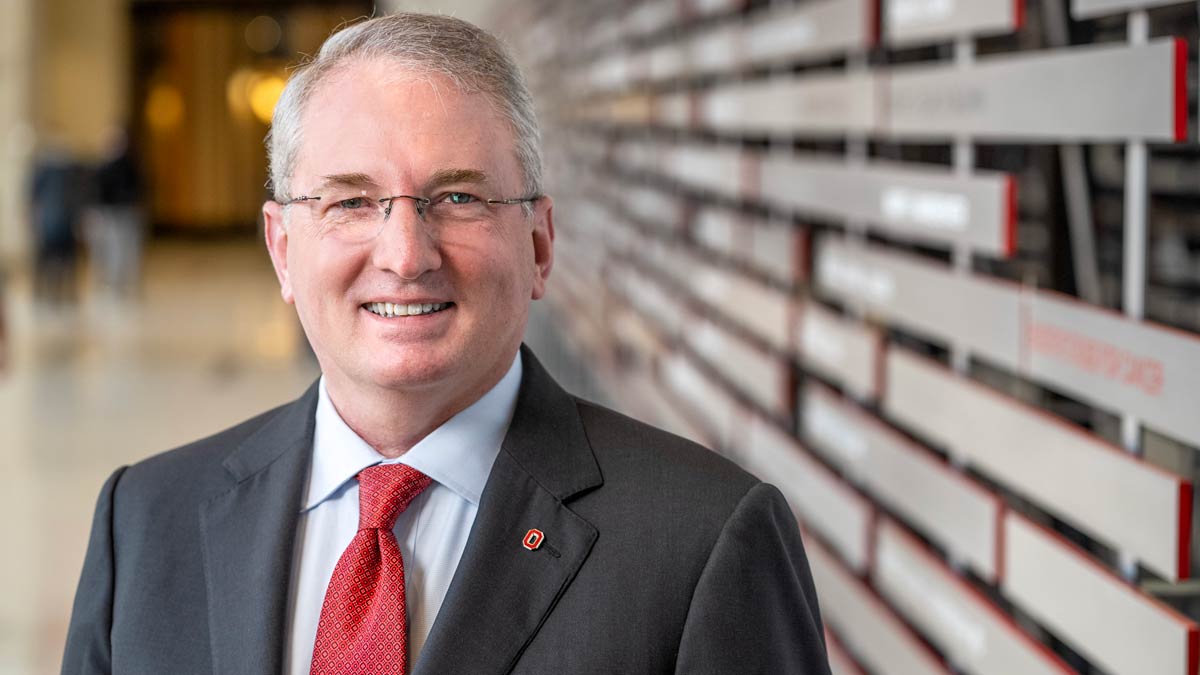
“I thrive best — and I enjoy my work the most — when I’m developing relationships. I’ve always viewed team-based success as incredibly important to overall success.”
At UT Southwestern, Dr. Warner worked with his team to identify quality, safety and patient experience as their top priority, going as far as to call it their “singular focus” and making it a public commitment. The goal permeated the organization so deeply people would remind Dr. Warner of the priority if another initiative was taking them away from that focus.
That focus paid off.
During his tenure at UT Southwestern, the medical center earned regional and national distinction for quality care and patient experience. Clements University Hospital has been ranked the No. 1 hospital in Dallas-Fort Worth and the No. 2 hospital in Texas for six consecutive years by U.S. News & World Report.
UT Southwestern Medical Center has been a two-time recipient of the Rising Star Award from Vizient, the benchmarking organization for academic medical centers’ top performance in quality, safety and patient-centeredness. Both UT Southwestern hospitals and medical practice received Press Ganey Pinnacle of Excellence Awards for patient satisfaction and experience over the past three years.
A personal health crisis Dr. Warner “never saw coming”
In 2017, Dr. Warner experienced a personal health crisis where he learned firsthand the vulnerable world of a hospital patient.
At the time, Dr. Warner was in California for an American Heart Association (AHA) conference. He was serving as the AHA’s volunteer president and had just given the presidential address to fellow cardiologists.
Early the next morning after a brief workout at the conference hotel, Dr. Warner suffered a heart attack complicated by a cardiac arrest.
Just 52 at the time, the cardiologist and expert in the risk factors for heart disease says he never saw it coming.
“I did things better than the other men in my family in terms of taking care of myself. But at the end of the day, it didn’t make a difference,” Dr. Warner says. “It shows there’s still work to be done. And so that motivates me every day to think about that for not just heart patients but for cancer patients or patients with other diseases. We’ve got to continue finding ways to identify who’s at risk and ways to modify that risk earlier in life.”
His experience has shaped how he talks to patients and leads hospitals.
“Being on the other side of the stethoscope has changed the conversations I have with people about their own health,” Dr. Warner says. “It also influences decisions I make as a leader. I feel like I’ve joined another community, the patient community, as opposed to just the doctor community. That’s been good for me.”
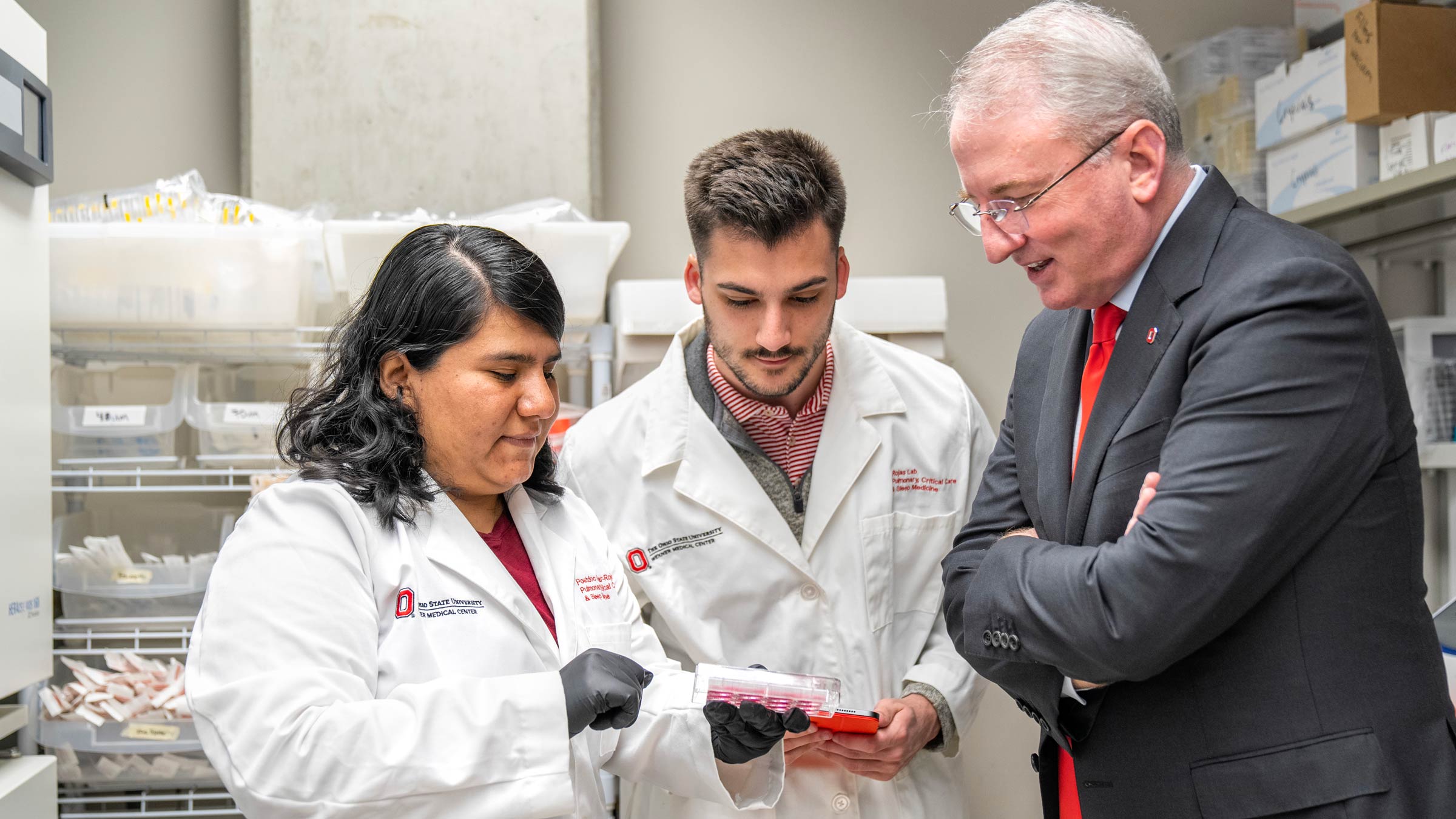
Ohio State provides an opportunity that can’t be matched
Top medical institutions have tried to recruit Dr. Warner for years. But he wasn’t moving for a job unless it offered him the chance to do something bigger than he’d already done. A tall order for a lifelong Texan.
Ohio State checked all the boxes: To his mind, it was the opportunity to lead a nationally ranked medical center connected to an outstanding public research institution.
He sees an unmatched opportunity at Ohio State.
“This is a city on the threshold of transformation,” Dr. Warner says.
“Ohio State has all the resources and the talent to make that happen. It’s exciting to imagine what we’ll accomplish if we can channel our resources to rise to this opportunity.”
He’s impressed by the Ohio State Wexner Medical Center’s size and reach, and the diverse populations it serves. The medical center’s adjacency to The Ohio State University was a huge draw. He marvels at the convenience of being able to walk from the central clinical campus to the seven health science colleges and what that means for research collaboration and advancing care.
“It’s really special to have the benefit of this enormous research enterprise intermingled in the spaces where we’re educating students and health care professionals,” he says.
Having always placed patient care at the center of his leadership, he sees an opportunity to enhance the collaborations of the three-part mission of academic medicine happening at Ohio State: patient care, research and medical education.
“I think all three elements of the mission go together, and so the better you are at one, the better you are at the others,” Dr. Warner says. “I feel like what people have appreciated most about my leadership is the symmetry of the mission that I have prioritized.”
Aligning health care transformation with regional growth and innovation
Attracted by what he calls “an innovation culture” happening in central Ohio, Dr. Warner says the region is primed for a health care transformation. With the right planning, he predicts, health care can be on the leading edge of central Ohio’s explosive growth. The region’s population grew by more than 15% in the last decade alone, and by 2050, another 1 million people will call the Columbus area home.
“There are moments in time in certain communities where inflection points occur. I feel like Columbus and Ohio State are poised for that,” Dr. Warner says. “There aren’t many places where the coalescence of business interests is right in line with medicine and science. So that’s what makes this an interesting time and space. The opportunity to be part of this community when it amplifies and goes forward is really meaningful.”
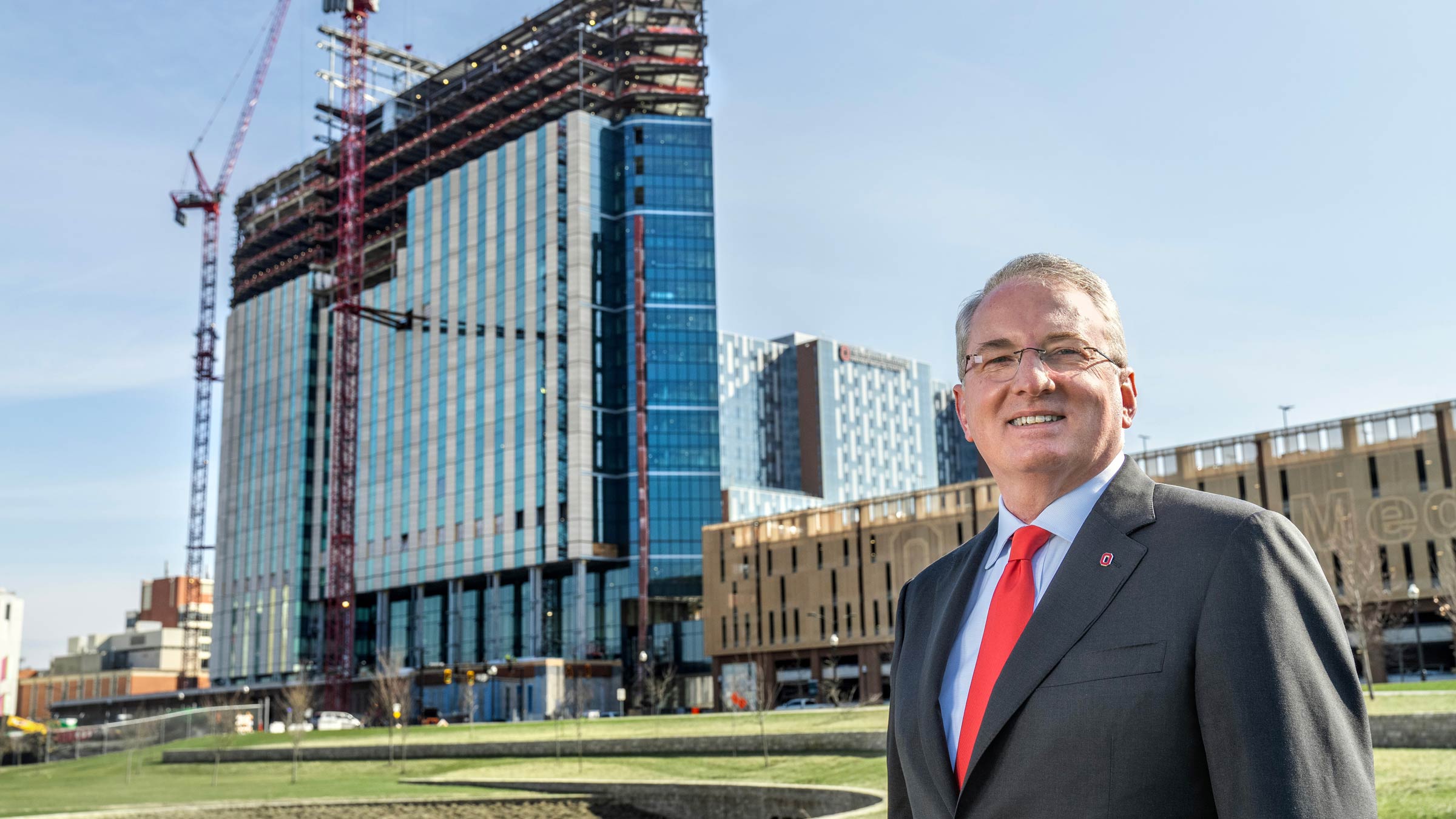
John J. Warner, MD, is invigorated by the “innovation culture” he sees taking place not just at Ohio State but across Columbus and the state.
Setting goals and leaning into experience in his first year
In his first year at Ohio State, Dr. Warner will focus on learning from colleagues, donors and leaders across the Ohio State Wexner Medical Center, as well as from central Ohio stakeholders, public officials and the business community.
Job No. 1 will be to expand on priorities that reflect those collective needs and interests. This plan models the successful approach he took in Dallas initiating widespread conversations before implementing a major initiative. So far, early conversations are giving him a valuable sense of a community energized by a brighter future.
“Everybody sees Columbus and surrounding communities elevating from a business perspective, from a science perspective, from a neighborhood perspective,” he says. “We’re going to make sure that the goals of the medical center are aligned with the goals of the community because that’s who we’re serving. It’s going to affect everything from how Ohio State partners with employers to how it provides innovative health care.”
Ready to elevate the Ohio State Wexner Medical Center on the national stage
Dr. Warner is ready to bring his team-based approach to initiatives across all areas of the medical center’s mission. He aspires for the Ohio State Wexner Medical Center, the Ohio State College of Medicine and The Ohio State University Comprehensive Cancer Center – Arthur G. James Cancer Hospital and Richard J. Solove Research Institute to be “seen as the very best place for everything.”
“I want us to be in everyone’s first or second sentence as a medical center,” he says. “I’m talking nationally as a place to train, as a place to go to school, as a place to do research, as the place to get care and service.”
If there’s a recurring theme in Dr. Warner’s story, it’s his commitment to putting the patient first.
“My core value is focused on the quality of the health care experience and the outcomes we’re able to achieve for our patients. Conducting high-caliber research and educating learners are central to supporting that focus — all of it benefits the patient in the long run.”
He joins the Ohio State Wexner Medical Center at a challenging time for the health care industry in general, coming on the heels of the COVID-19 pandemic. He anticipates high consumer demand will continue to drive change at a rapid pace.
“I think health care delivery is going to change more in the next 10 years than it has in the last 50,” he says.
That’s the kind of challenge that excites him as a leader. He’s ready to make his biggest impact yet at Ohio State with a health care transformation that will come from listening to patients and their loved ones, as well as to the health care community that cares for them.
“Ohio State has an opportunity not just to be part of the change that’s happening, but to lead the work. That’s why I took the job.”

When you give to The Ohio State University Wexner Medical Center, you’re helping improve lives
We’re committed to making advancements in research, education and patient care that will have an impact throughout Ohio and the world.
Ways to Give


